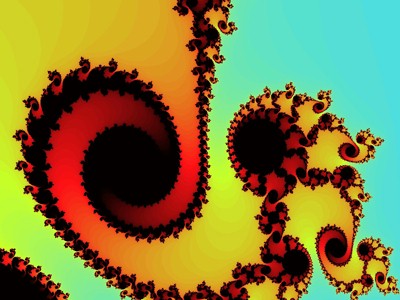All Nonfiction
- Bullying
- Books
- Academic
- Author Interviews
- Celebrity interviews
- College Articles
- College Essays
- Educator of the Year
- Heroes
- Interviews
- Memoir
- Personal Experience
- Sports
- Travel & Culture
All Opinions
- Bullying
- Current Events / Politics
- Discrimination
- Drugs / Alcohol / Smoking
- Entertainment / Celebrities
- Environment
- Love / Relationships
- Movies / Music / TV
- Pop Culture / Trends
- School / College
- Social Issues / Civics
- Spirituality / Religion
- Sports / Hobbies
All Hot Topics
- Bullying
- Community Service
- Environment
- Health
- Letters to the Editor
- Pride & Prejudice
- What Matters
- Back
Summer Guide
- Program Links
- Program Reviews
- Back
College Guide
- College Links
- College Reviews
- College Essays
- College Articles
- Back
Fractals MAG
Throughouthistory, mathematical discoveries have revolutionized not only the way we viewour world but the way we operate within it. Accurate knowledge of geometryenabled the ancient Egyptians to build magnificent pyramids which remain ademonstration of human ingenuity and creativity. The development of trigonometryenabled previously immeasurable distances to be calculated, and applicationsquickly arose in the fields of navigation, astronomy, physics, surveying,chemistry and engineering.
One newly discovered field of mathematics, thegeometry of fractals, has yet to be applied as rigorously to our everyday lives.Could this mysterious branch of mathematics lead to something more than justpretty pictures? Could fractals lead to further innovations that would change howwe live and how we view our surroundings? Or could they provide the key tounlocking the greatest enigma of all - the ultimate structure and origins of ouruniverse?
The term fractal was coined by Benoit Mandelbrot in order todescribe irregular, intricate patterns and shapes that intrigued and astonishedhim. Such configurations could not be described by any previously availablemathematical concepts. Objects found in our natural surroundings, such as clouds,trees, even continental coastlines, fit this classification of irregularity. Thedevelopment of computer imaging revolutionized our understanding of fractals andmade possible the creation of these magnificent shapes in all their splendor.Computers literally translate mathematical formulae into stunning, visualrepresentations of sinuous designs and vibrant colors.
The definition of afractal demands that the shape must have detail at every level of magnification;in other words, one can "zoom in" on the fractal endlessly without anydetail being lost. Theoretically, however, it does not appear that our universeexhibits such a quality.
Yet the universe does exhibit a propertycommon to many fractals, a self-similarity between different levels ofmagnification. This is evident, for instance, in many varieties of ferns, whereindividual leaves have the same shape as the greater structure. Even the orbitsof planets around stars are similar to the rotations of electrons around thenuclei of the atoms which comprise them.
Fractal technology has alreadybeen put to use in the field of computer image compression, discovered in 1987 byDr. Michael F. Barnsley. Here, the computer calculates a fractal formula from agiven image, allowing multimedia to be "packed" into smaller filescontaining fewer details of the image itself and more of its fractal equivalent.
What if this technology could be used to describe the entire universeas a fractal? In that case, predictions could be made not only about the natureof massive galaxies and infinitesimal quarks, but also regarding the state of theuniverse around the time of the Big Bang and its condition in the future. Infact, many renowned physicists (Albert Einstein and Stephen Hawking) have statedthat they believe a single, unified theory exists that could describe the entirestructures of space and time. Is this related to the fact that a single formuladescribes a plethora of magnificent images in the Mandelbrot and other fractalsets?
We have not yet identified the link between the abstract, chaoticworld of fractals and the concrete truths which saturate our reality. Yet iffractals truly are the "blueprints of the universe," these chaoticshapes could truly be the link to a complete knowledge of universal order andharmony.

Similar Articles
JOIN THE DISCUSSION
This article has 1 comment.

0 articles 0 photos 12292 comments